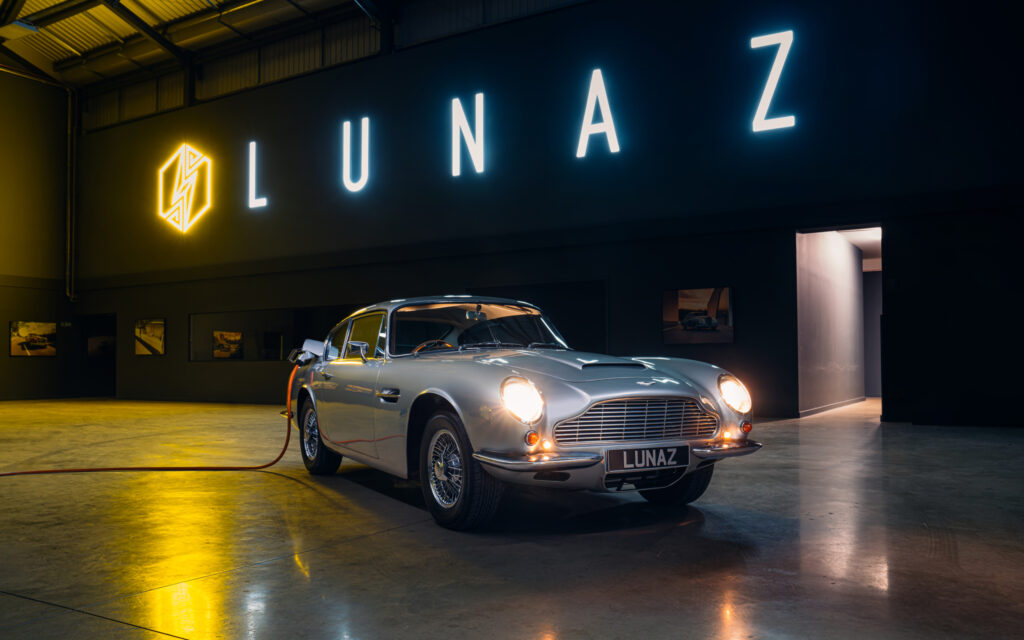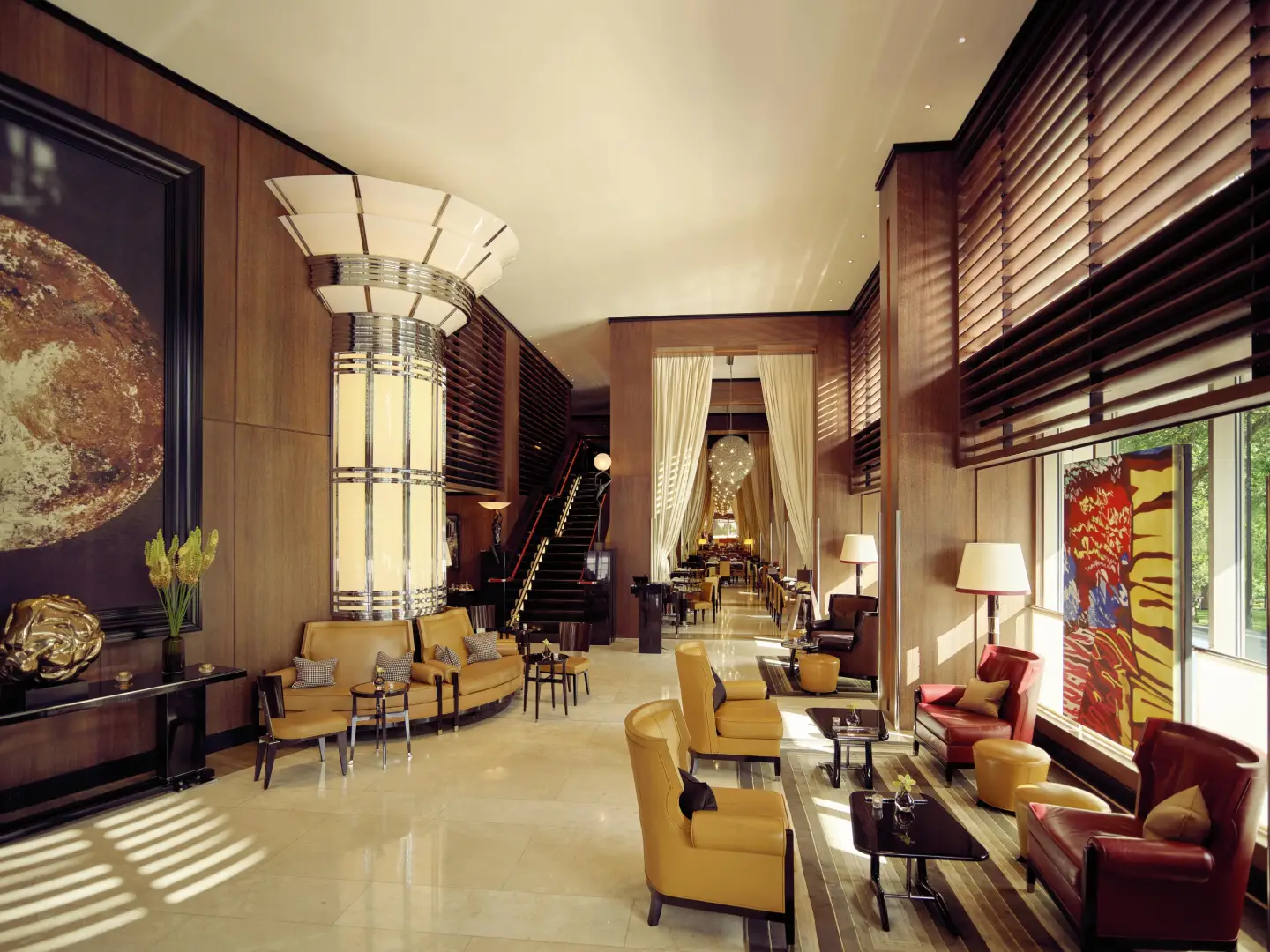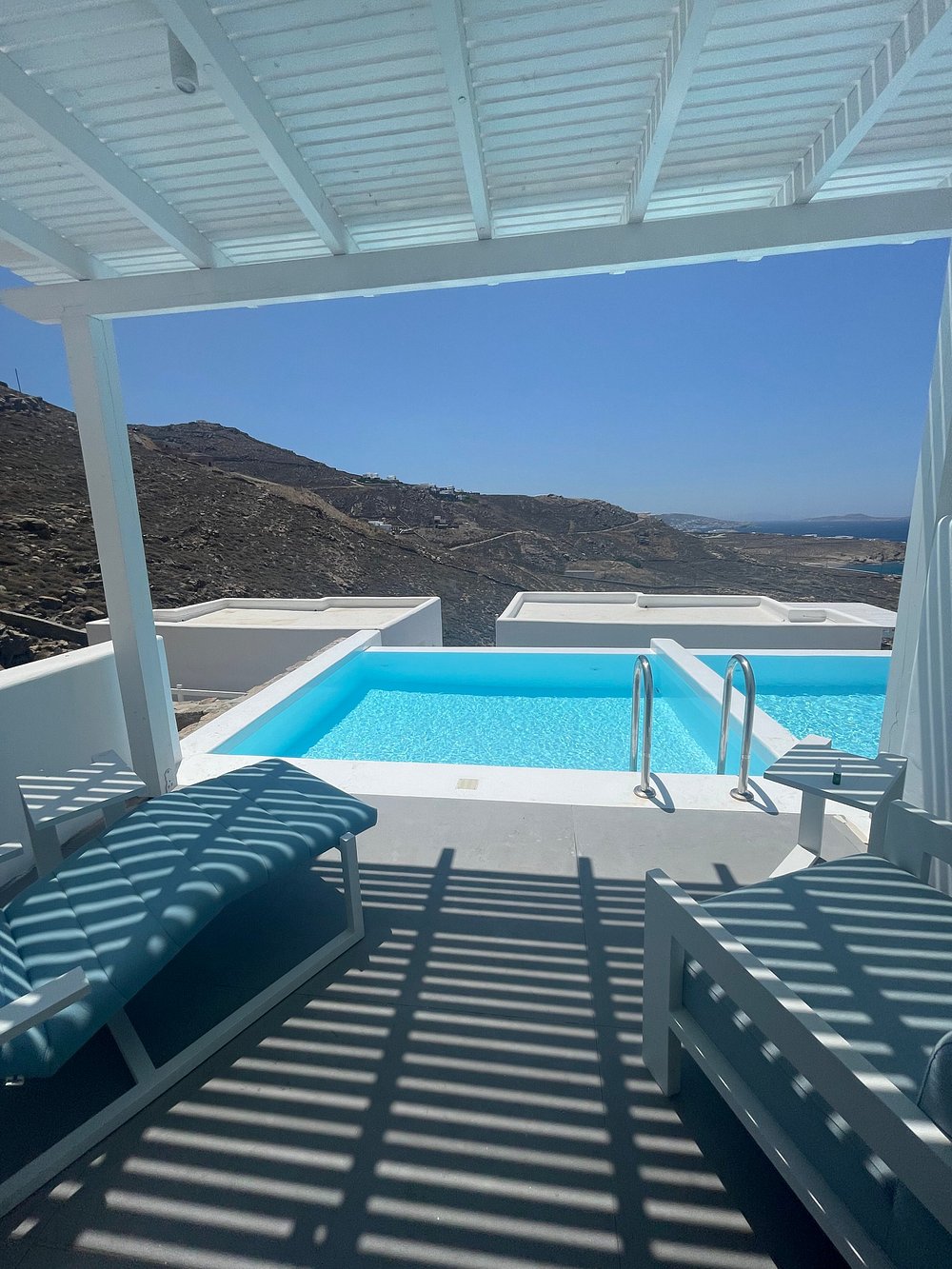Lunaz proudly presents a ground-breaking idea for the most environmentally friendly Aston Martin ever—an upgraded and repurposed DB6. It emphasizes that sustainable luxury is characterized by various alternatives rather than sacrifice with its powerful and quiet 375 horsepower electric motor.
Currently, a design study, the idea integrates advancements ready for production, many of which have been effectively used in Lunaz’s past classic automobiles that have been elevated and electrified. These technologies are combined in one ground-breaking project, highlighting Lunaz’s leadership in sustainable luxury.
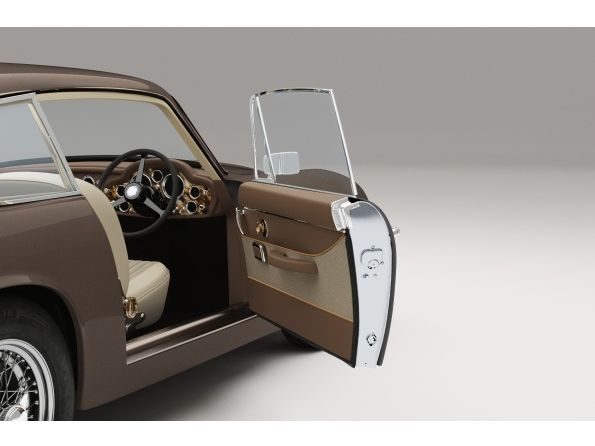
Lunaz’s restored vintage vehicles use the patented modular electric drivetrain, created entirely in-house. It comprises premium Tier 1 OEM battery cells and motors imported from Europe. It has a range of 255 miles, 375 horsepower, a fast-charging capability called CCS, and a battery capacity that ranges from 80 to 120 kWh.
The three-quarter glass handle, gear shifter, and dashboard face of the upgraded DB6 are all constructed of a biodegradable composite material created by combining discarded egg and nut shells with an organic binder. Replacing oil-based polymers with a sustainable alternative, this material replicates the high-end ‘ marble’ seen in the DB6. It is biodegradable and entirely natural.

The upgraded DB6 door cards use a bio-based Polyurethane (PU) fabric made from a combination of sustainable plant-based elements, such as fibers derived from maize and wood pulp. This fabric uses fewer raw ingredients without sacrificing durability or upkeep thanks to its distinctive matte surface, mild organic texture, and semi-lustrous foundation.
The headliner, seats, and door cards include accent piping from a fantastic leather substitute from Apple Pomace, a beverage industry byproduct. When water-based polyurethane and wood pulp backing are added, the result is a light, soft material with the abundant appearance and feel of genuine leather.

Made explicitly for high-traffic regions, the door card accent and seat upper flutes are made of a fabric mix comprising 66% post-industrial recycled cotton, 27% polyester, 6% rayon, and 1% nylon. This cloth stays away from materials on the Living Building Challenge Red List and is devoid of “forever chemicals.”
The lower seat flutes use a newly designed upholstery fabric of 54% recycled polyester, 35% new wool, and 11% nylon. This combination produces an eye-catching ‘knitted’ surface with a complex chevron pattern. Carefully aligned strands of recycled polyester and wool provide a glossy sheen and exceptional resistance to abrasion.
The soft but very resilient carpets used in cabins and boot floors are composed of regenerated nylon obtained from recycled waste materials like abandoned carpets and fishing nets. Plastic bottles of recycled polyethylene terephthalate (PET) create the backing.
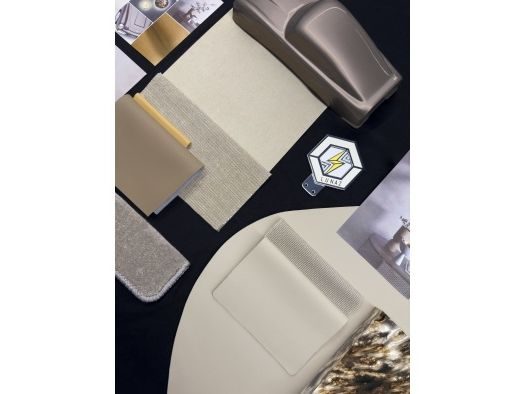
Lunaz uses a Savannah hue of the lowest-carbon leather available in the world for seat bolsters, flute accents, parcel shelves, and transmission tunnels. The leather manufacturing process produces emissions between 30 and 50 percent lower than the industry norm. This leather is entirely biodegradable and is a byproduct of the livestock industry.
David Lorenz highlights the team’s extraordinary talent and inventiveness, combining various cutting-edge materials to create an opulent, harmonic, and tactile environment superior to anything on the market.
